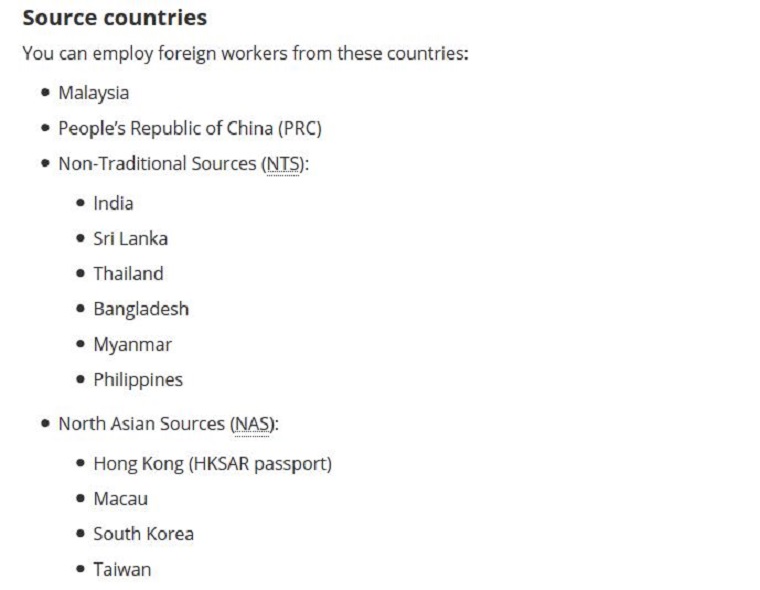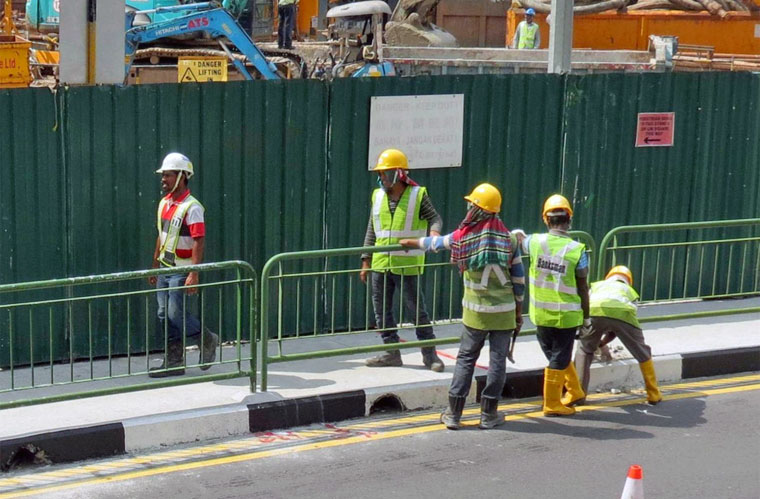It is always a little tough to carry out a rational discussion when the title of an article already contains accusations of apartheid.
But that was the challenge freelance journalist Surekha A Yadhav placed upon herself having written a piece, "Apartheid in Singapore?", published on April 10 in an online newspaper, Malay Mail Online.
While the term "apartheid" is most commonly associated with the racially divisive South African regime from the 1950s all the way to the mid-1990s, the actual etymology of the word derives from the Afrikaans (a language spoken in certain parts of Africa) word for "separateness" or "the state of being apart".
It is in this context that Surekha makes the case for there being some form of "apartheid" present in Singapore.
And the victims of this "apartheid", according to Surekha, are the South Asian worker community in Singapore.
The article appears to hinge on MP Denise Phua's recent "walking time-bombs" comments made in parliament regarding large portions of the community.
Surekha wrote:
Some time ago, I asked: “Is Singapore a racist country?” Last week, I think, MP Denise Phua provided an answer — a rather emphatic yes.
According to Surekha, Singapore has two main pressing issues to deal with in terms of the racial division.
So we have a twofold problem: One is the ongoing treatment of the South Asian workers who enter this country for manual and low skilled jobs — they are marginalised, demonised, their living conditions are poor, and their legal rights scant. The second element is that the treatment of these workers reflects the way Singaporeans of South Asian origin/appearance are perceived in general.
She backs her assertion by pointing to both MP Phua's time-bomb comment as well as Singapore's existing rules regarding the hiring of service workers.
It is a real problem compounded by confounding laws such as Ministry of Manpower directives that state South Asian (foreigners) can only be hired in menial/manual labour positions, but can’t be hired for higher status retail work (these positions are reserved for East Asian foreigners).
Is she right?
Surekha is absolutely right about the law regarding service staff, if South Asian refers to Non-Traditional Sources and East Asian refers to North Asian Sources.

However, a quick look at the work permit requirements in other sectors reveal the same race quota practice at work regarding different sectors as well.
Processing sector

Construction Sector
 Screenshots from MOM's website
Screenshots from MOM's website
For these two sectors, both South and East Asian workers are allowed to be hired. Which doesn't tally with Surekha's implication that East Asians were not present in "lower" sectors such as construction and processing.
But, the question remains, why these policies in the first place?
A possible reason might be that construction and processing sectors traditionally offer much lower pay and are shunned by locals and East Asians.
As for MP Phua's comments targeting a certain segment of South Asian workers, it's hard to condone its socio-politically tone deaf nature.
To be fair to MP Phua, she didn't technically call for South Asian workers to be cordoned off in one location. Rather, she called for a less centralised gathering spot for the workers that extends beyond Little India:
(1) Form a high-level multi-agency Task Force to mitigate the security and dis-amenity risks of high congestion of visitors to Little India;
(2) Ring-fence the Communal Areas of Residents such as the playgrounds and void decks so that the old and the young get to use the space meant for them;
(3) Continue with and do not stop resourcing the recommendations of the Committee of Inquiry viz-a-viz alcohol consumption restrictions and patrol teams;
(4) Decentralise further by building more recreation centres outside Little India; and
(5) Engage regularly through planned dialogues with all key stakeholders, the foreign workers, agents, businesses and residents.
Definitely not well-thought out or phrased, but hardly apartheid-level rhetoric.
So no apartheid, right?
Not exactly.
The foundations for both the MP Phua's comments and the workplace hiring regulations might not be racist in conception, they are more pragmatic than racist, but the end product feels strikingly race-based.
Pragmatism was present from the very start of Singapore's rise, with percentages of housing being assigned to the corresponding percentages of races in a bid to cultivate a multicultural mix that would prevent enclaves.
The problem arises when pragmatic policies are adopted without forethought for the individuals that are being affected.
Take the recent Wisma Atria case, where construction workers were prevented from using public toilets in the mall.
There have been some defending Wisma Atria's policy as a way to prevent excessive mud and dirt, or to stop workers from using the mall's water to wash their equipment.
But that is exactly the point. When pragmatism is a convenient shorthand to justify actions, whole swathes of people might be affected by policies that skip the prescription of instructions and target the people.
Are the staff at Wisma Atria, or Denise Phua, or even the Ministry of Manpower irredeemably racist?
No, of course not.
But they saw nothing wrong with truncating these complex rules and ideas to target a section of people.
So when Surekha talks about a racial apartheid in Singapore, it might be a bit of a stretch, but is there an apartheid based on pragmatic factors? Maybe.
And the worst part is that the line between pragmatism for the sake of nation-building and racially discriminating certain segments of the population isn't exactly the clearest one.
And it is getting blurrier by the second.
Related articles
Migrant worker consumed meal on wet ground as he feared he might dirty bus stop seat
Top photo via Gwydion M. Williams Flickr
If you like what you read, follow us on Facebook and Twitter to get the latest updates.
If you like what you read, follow us on Facebook, Instagram, Twitter and Telegram to get the latest updates.
